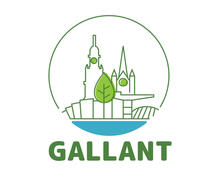Conventional wisdom seems to say that the growth of cities is beneficial for the happiness and well-being of people who move into and live in them. The underlying assumption, as I understand it, is that larger, growing cities offer greater access to opportunities for employment, career advancement, higher income potential, and a sense of financial security and personal achievement.
Cities also tend to have better infrastructure, including quality healthcare facilities, educational institutions, and cultural amenities, as well as access to entertainment that can enhance overall well-being and life satisfaction.
Urban environments can potentially facilitate greater social interaction due to greater numbers of people, higher population density, wider variety of social events and gatherings, the formation of new friendships, professional networks, and a sense of belonging. Moreover, people in urban areas often experience faster adoption of technology and innovation, leading to improved quality of life through advancements in transportation, communication, and convenience.
But none of this means that people living in growing cities are any happier. Indeed, contrary to this conventional wisdom, the body of research on cities and happiness shows quite the opposite. If anything, urban living tends to decrease overall happiness. It does so for example by fostering disconnection, stress, environmental degradation, and the erosion of community bonds.
While the benefits of urban living vary across individuals and urban places, social scientists tend to agree on several key factors related to happiness itself. Research has, for example, associated greater personal happiness with the factors of better friendships and personal relationships; more meaningful work; better marriages or relationships with significant others; greater health; enough money to pay bills and enjoy leisure time; freedom to practice a religion of one’s choice; and having a sense of living in a fair and well-governed community. The research also indicates that once one has enough reliable income, the goals of wealth, fame and attractiveness are hollow in regard to improved happiness.
Sure, insofar as the growth of cities enhances the factors that improve people’s happiness, it contributes indirectly to happiness. For example, cities bring access to more jobs, which increases the odds of any given person finding not only a job but furthermore a meaningful one. Similarly, increases in the numbers of religious communities and organizations in cities imply a greater variety of religious opportunities and a greater likelihood that any given individual will find one of his or her choosing. Living in a city tends to increase access to hospitals, doctors and other healthcare clinics, thus contributing to better health and thus indirectly to improved happiness.
But beyond these indirect contributions, growing cities also come replete with factors that tend to negatively impact individual and collective happiness. They can for example bring increased pollution and other forms of environmental degradation, traffic congestion, violent crime and social inequality, and a more rapid pace of life, all of which can negatively impact happiness. They can also bring greater disconnection and erosion of community bonds, loss of high-quality friendships and personal relationships, and loneliness.
While happiness is a complex and multifaceted phenomenon, all things considered, the research indicates fairly clearly that relative to people living in rural areas, people living in urban areas are less happy. They tend to have a weaker sense of community and social cohesion; fewer face-to-face interactions and more socially-distant relationships with neighbors and community members; less access to natural environments, open spaces, greenery, and cleaner air; a faster pace of life and a higher cost of living. People in urban areas also tend to have a greater exposure to media, advertising, and social comparisons, which can lead to increased feelings of inadequacy or lower life satisfaction.
One might think that such considerations would matter for public policy. Certainly, thinkers about public policy going as far back as Jeremy Bentham (1748-1832), the founder of modern utilitarianism, have considered happiness to be the business of government. Indeed, Bentham defined as the "fundamental axiom" of utilitarianism the principle that "it is the greatest happiness of the greatest number that is the measure of right and wrong." The ultimate goal of public policy should accordingly, on Bentham’s account, be to enhance citizens’ subjective well-being and happiness.
All of which makes me wonder why public policy makers emphasize urban growth so heavily, while happiness is not usually even a legitimate topic for serious policy discussion.
There are pretty convincing arguments that the public generally has an interest in having happy citizens. Happy citizens are more likely to engage in positive social interactions and contribute to a sense of community and cohesion. Happy citizens tend to be more productive, innovative, and motivated. Their positive mindset can contribute to economic growth and stability, leading to better job performance and entrepreneurial endeavors.
Indeed, improved happiness among an urban population could lead indirectly to a whole range of positive outcomes. Happiness is linked to better physical and mental health outcomes, and it can contribute to lower crime rates and decreased social disruption. Happy citizens are more likely to participate in civic activities, volunteer work, and community projects. Happiness within families can lead to better relationships, improved child development outcomes, and reduced stress levels, creating a positive cycle that benefits both individuals and society. Happy students are more likely to be engaged in learning and perform better academically, thus producing a better-educated workforce and more informed and responsible citizens.
Last December, in a post entitled ‘Cities Can't Manage What They Don't Measure,’ Bob Gleeson made the point that data-driven stories provide essential feedback about how our current forms of government are using social authority. But most cities do not even gather data on the happiness of their populations, much less use it to tell stories or evaluate their policies.
And they certainly could do so if they wanted to. Indeed there are several reliable metrics and valid methods for self-reporting and assessing happiness.[1] Moreover, research shows not only that some of these methods track other, objective societal and economic conditions fairly well, but furthermore self-reported well-being helps quantify people’s suffering (e.g., severe disability is twice as detrimental to happiness as is unemployment).
Direct measures of the happiness of citizens could (and perhaps should) be used not only to tell data driven stories about what is going on in our cities, but also to evaluate the effectiveness of changes in the well-being and satisfaction of individuals that follow from certain policies and strategies.
How does urban growth empirically affect the happiness of a local population? How does local economic development, regional transit or infrastructure development affect well-being? Subjective measures of happiness could help answer such questions in real time, and could allow for feedback on policy effectiveness by gauging the effectiveness of some (but obviously not all) policies.
In the Nicomachean Ethics Aristotle said, “Happiness is the meaning and purpose of life, the whole aim and end of human life.” Metrics and methods are available with which to measure and evaluate how societal conditions affect the happiness citizens. Their use by public policy makers would undoubtedly at times challenge conventional wisdom. It could also possibly lead to improved decision-making. The use of direct measurements of the happiness of populations might also help attain the greatest happiness of the greatest number of people. Thus, their use definitely can and perhaps should be critically considered and discussed by citizens and their policy makers.
Bill Bowen
[1] These include, for example, surveys and questionnaires, such as the World Happiness Report's method of asking individuals to rate their perceived life satisfaction on a scale, are widely used to collect self-reported happiness data. A couple of the several other examples include the Positive and Negative Affect Schedule (PANAS), a widely used scale that measures positive and negative emotions; Subjective Well-Being (SWB) Scales that include questions about life satisfaction, positive affect, and negative affect; and indices such as those used to gather data for the United Nations and the World Happiness Report.
Discussion topics:
- Log in to post comments














Latest Comments